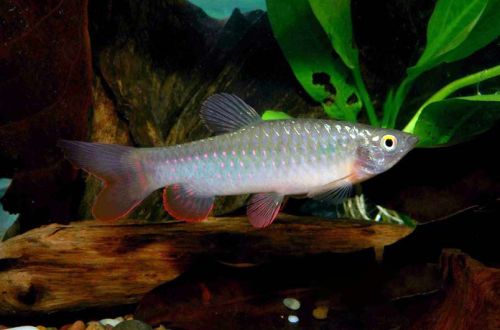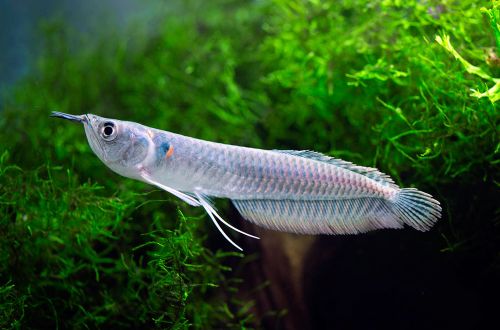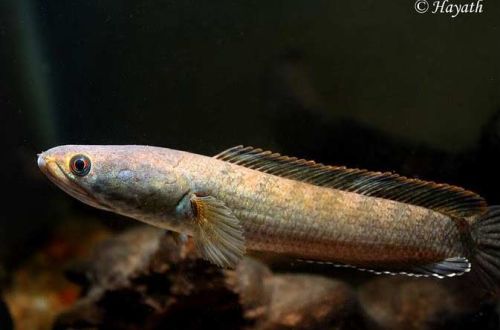
Copeina trout
Copeina trout, scientific name Copeina guttata, belongs to the Lebiasinidae family. The fish is not recommended for beginner aquarists due to its gastronomic characteristics, water quality requirements and rather aggressive behavior during the mating season. Successful content is only possible with a certain amount of experience and accumulated knowledge.

Contents
Habitat
It originates from South America from the upper and middle Amazon basin in the territory of modern Brazil, Peru, Ecuador and Colombia. It lives in numerous rivers flowing among tropical forests.
Brief information:
- The volume of the aquarium – from 150 liters.
- Temperature – 20-28°C
- Value pH — 4.0–7.5
- Water hardness – soft (1-10dGH)
- Substrate type – sandy
- Lighting – subdued
- Brackish water – no
- Water Movement – Low/Moderate
- The size of the fish is up to 7 cm.
- Nutrition – a combination of live food with herbal supplements
- Temperament – conditionally peaceful, during the spawning period, males become aggressive
Description
Adult individuals reach a length of about 7 cm. Sexual dimorphism is weakly expressed. The predominant coloration is silvery with rows of red dots, the fins and tail, except for the dorsal, are pink. A similar pattern, along with the shape of the body of the fish, has similar features with river trout, from which it got its name.
Food
The basis of the daily diet is live or frozen foods (bloodworm, daphnia, brine shrimp and analogues) with some addition of dry food (flakes, granules) containing herbal supplements.
Maintenance and care, arrangement of the aquarium
A pair of adult fish needs a tank of at least 150 liters. Trout copeina is quite destructive for the interior of the aquarium, especially during the spawning period, so strong root plants or ferns should be used in decoration, located near snags or tree roots securely fixed in the sandy substrate.
Optimal conditions are achieved in slightly acidic water with low carbonate hardness at temperatures up to 28°C. The fish are intolerant of the accumulation of organic waste, a weekly renewal of part of the water (20-25% of the volume) is mandatory, along with periodic cleaning of the soil and glass.
The standard set of equipment includes a filtration and aeration system, lighting fixtures and a heater. The equipment is adjusted in such a way as to provide subdued light and moderate or weak current.
Behavior and Compatibility
A relatively peaceful species, however, during the spawning period and during the incubation period, males become aggressive, protecting their offspring. The joint maintenance of other fish with a pair of male / female is permissible only in an aquarium of more than 200 liters. Otherwise, they are quite compatible with other calm species of a similar or slightly larger size.
Breeding / breeding
Copeins trout are extremely responsible parents. During the mating season, the male prepares the nest, digging a hole in the soft substrate, and persistently invites the females to it. Sometimes courtship turns into pursuit, and if the female is not ready, she hides in a shelter from her boyfriend. When the eggs are laid, the male becomes her guard, driving away anyone who may be dangerous. Care is also manifested in the constant fanning of the eggs with fins for better gas exchange and cleaning the masonry from debris. The fry appear on the second third day, from that moment the parental instincts begin to weaken and, in order to protect the offspring, they are transplanted into a separate tank with identical water conditions.
Fish diseases
A balanced aquarium ecosystem with suitable conditions for a particular species is the best guarantee against the occurrence of diseases. If signs of illness are found (unusual behavior, rashes on the body, etc.), first check the quality and parameters of the water and only then take it for treatment. Often it is enough to return the conditions of detention to optimal values in order to solve the problem.





